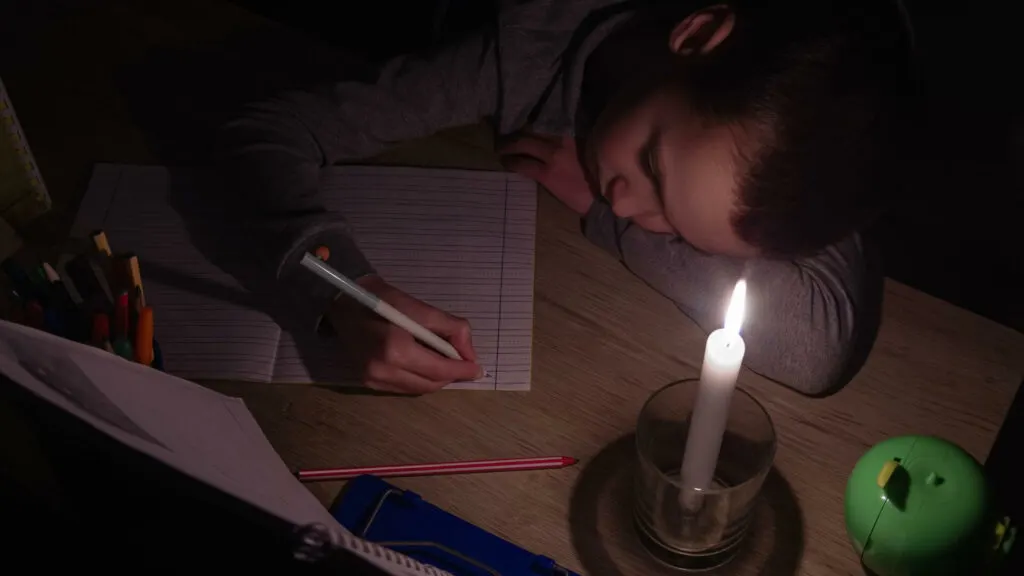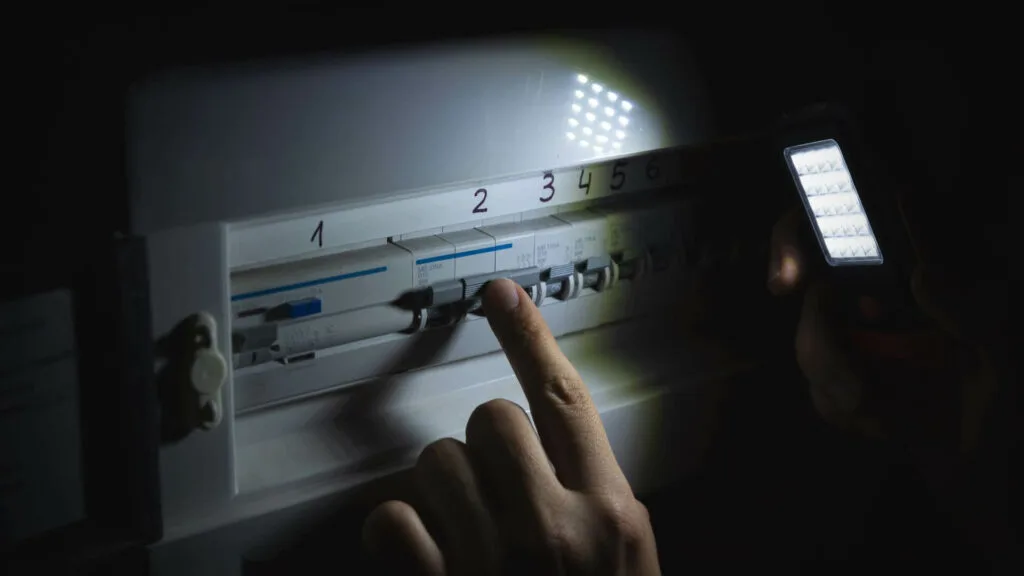When the lights go out and you find yourself in the dark, a power cut can be more than just a minor inconvenience for you and your family − it can disrupt your whole day. Understanding why power cuts happen and knowing what to do when they occur is crucial for staying safe and minimizing discomfort.
Power outages can be caused by various factors, including severe weather, unexpected technical failures, or even scheduled maintenance by utility companies.
Being prepared is key. It means having the right supplies on hand, knowing how to keep food safe when the fridge is off, and ensuring you can keep warm or cool without electricity.
This blog will walk you through the essentials: what to do before, during, and after a power cut. We’ll cover everything from preparing an emergency kit to entertaining your family without the help of gadgets.
By the end, you’ll have a solid plan to not only survive the next power outage but handle it with ease. So, let’s get started and turn those unexpected blackouts into just another manageable bump in the road.

Before the Power Cut
Getting caught off-guard by a power cut can be stressful, but a little preparation can make a big difference. Start by assembling an emergency kit that’s easy to grab in the dark. Include essentials like flashlights, extra batteries, a portable radio, and first aid supplies. Don’t forget to add bottled water and non-perishable snacks − items that can sustain you without the need to cook.
Another smart move is to install surge protectors on your major appliances and electronic devices. These can help prevent damage when the power snaps back on, safeguarding your gadgets from unexpected surges.
Additionally, create a family emergency plan. Make sure everyone knows where to find the emergency kit and how to stay safe in different areas of the home.
Discuss where to meet if you need to evacuate and make sure everyone knows how to manually open automatic garage doors or gates. These steps can help ensure that everyone stays calm and coordinated, not just during blackouts but in any emergency.
During the Power Cut
When the power goes out, your immediate focus should be on safety and comfort. First off, avoid opening your refrigerator and freezer doors as much as possible. This helps keep your food cold and safe for a longer period − usually up to four hours for a fridge and about 48 hours for a freezer if they are not opened frequently.
For lighting, opt for flashlights or battery-powered lanterns instead of candles to minimise the risk of fire. If you must use candles, ensure they are placed on a stable surface away from anything flammable and never leave them unattended.
If it’s safe to do so, check with neighbors to see if the power cut is affecting just your home or the whole area. This can give you a clue as to whether you need to report the outage to your utility company or just wait it out. From the perspective of Metropolitan Electrical Contractors, this is when you should consider contacting a professional electrician.
Keep a battery-powered or hand-crank radio handy to receive updates on the power cut and other important news. Staying informed helps you manage the situation better and keep your family reassured and calm.

Communication Strategies
During a power outage, staying connected can be a challenge but it’s essential for safety and peace of mind. Here are some effective ways to keep the lines of communication open:
- Keep your devices charged: Always have your mobile phone, laptop, and other devices fully charged in anticipation of a power outage. Consider investing in a portable charger or solar charger for extended outages.
- Use SMS and data conservatively: Remember that during power cuts, mobile networks may be overwhelmed, or your battery power could dwindle. Send SMS texts instead of making calls as they use less battery and are more likely to get through in busy networks.
- Establish a family communication plan: Ensure every family member knows who to contact in an emergency if you’re not together. Designate a family member or friend outside your immediate area to be a central contact point.
- Stay informed: A battery-powered or hand-crank radio can be invaluable for receiving live updates. Local authorities often broadcast important information and updates about power restoration efforts.
By planning ahead and using these strategies, you can maintain communication and stay informed throughout any power outage.
Dealing with a Prolonged Power Outage
When a power cut stretches beyond a few hours, it starts to affect more than just your evening plans. Here’s how to cope if the outage lasts longer:
- Manage food supplies wisely: If it looks like the power won’t be back soon, consume perishable items from your fridge first, followed by freezer goods. Keep pantry items for last as they have a longer shelf life.
- Conserve water: If you rely on an electric pump for water, conserve your supply. Use bottled water for drinking and prepare a limited amount for essential cleaning and hygiene.
- Stay cool or warm: Dress appropriately to maintain a comfortable body temperature. Use layers and blankets to stay warm, or find ways to stay cool through proper ventilation and light clothing if it’s hot.
- Consider alternative accommodations: If the blackout continues for more than a day or two and you’re facing extreme temperatures or other complications, think about staying with family or friends, or check into a local shelter if available.
These strategies will help you maintain a semblance of normalcy and safety during extended power outages.

Planning Ahead is the Key
Experiencing a power cut can be a bit daunting, but with the right preparation and response, it can be nothing more than a minor hiccup in your daily routine. By getting ready before an outage occurs, knowing what to do when the lights go out, and understanding how to communicate and stay safe during prolonged periods without power, you can handle these situations with confidence.
Remember, the key to managing a power outage effectively is staying calm and informed. Keep your emergency kit stocked, maintain your appliances with surge protectors, and ensure everyone in your household knows the emergency plan. These steps not only help during power outages but are also useful in other types of emergencies.
Finally, after each power cut, take a moment to reflect on what went well and what could be improved. Adjust your preparedness plan accordingly, restock your emergency kit, and you’ll be even better prepared for the next time the unexpected happens. Stay safe, and remember, a little preparation goes a long way.

Jessi is the creative mind behind The Coffee Mom, a popular blog that combines parenting advice, travel tips, and a love for all things Disney. As a trusted Disney influencer and passionate storyteller, Jessi’s authentic insights and relatable content resonate with readers worldwide.
